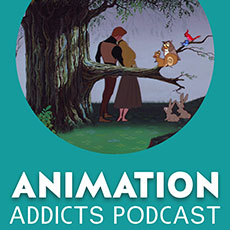Since its release in 1959, Sleeping Beauty has been hailed as one of Disney’s most lavish animated pictures. Previously restored for LaserDisc and a recent DVD edition, Sleeping Beauty has now undergone a complete transformation for its debut on high-definition Blu-ray Disc. Our three-part series on the film comes to a close with this discussion of what went in to waking Princess Aurora up for her extensive restoration…
Following in the steps of Walt Disney himself, the House of Mouse has always had one foot in the past and one foot in the future, a philosophy that extends to its rich legacy. This is an important aspect that the Studio has always been acutely aware of: the need, for a company founded on animation, to both preserve and restore its heritage. That’s why, when Disney goes back to its roots, it’s with state-of-the art technology.
In 2001, they initiated the Platinum Edition series with Snow White And The Seven Dwarfs, fully restored for the occasion. Yet, with improvements in technology, it has since proved possible to realize an even greater restoration, based directly on original material, a process which became a reality in 2005 with the release of the Bambi Platinum Edition DVD. Now, with growing interest in Blu-ray disc and Disney’s putting their considerable weight behind the format, the Studio has unveiled its latest restoration effort, using the digital process on another masterpiece, Sleeping Beauty.
Sara Duran-Singer, Senior Vice-President of Post Production at the Walt Disney Studios, is the Executive Sponsor In-Charge of the restoration and preservation of the Disney film library. At the invitation of the Walt Disney Studios, Animated Views had the privilege to attend a presentation of this whole process by Miss Duran-Singer, and also to ask a few more details about the film and its restoration from legendary Disney animator and animation expert Andreas Deja.

A positive use of negative
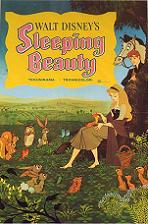 To get the measure of any improvement, it’s always good to go back and compare to what was previously achieved. As Sara Duran-Singer explains it, despite the fact that the first restoration allowed new generations of viewers to enjoy Disney classics in better conditions, the technology at the time was less than flawless: “You know, obviously, we’ve had ongoing releases of our library – especially the animated library – because each and every time there’s just a wonderful new generation of kids and families that want to see our films. And in the past, we’ve done good restorations that basically we’ve had to work on with some elements that were anywhere from two to four generations away from the original camera negative.
To get the measure of any improvement, it’s always good to go back and compare to what was previously achieved. As Sara Duran-Singer explains it, despite the fact that the first restoration allowed new generations of viewers to enjoy Disney classics in better conditions, the technology at the time was less than flawless: “You know, obviously, we’ve had ongoing releases of our library – especially the animated library – because each and every time there’s just a wonderful new generation of kids and families that want to see our films. And in the past, we’ve done good restorations that basically we’ve had to work on with some elements that were anywhere from two to four generations away from the original camera negative.
And a lot of these reasons were that we weren’t confident enough that the technology was able to handle our negative. We thought that we could use positive or internegatives that were made up of the original negative. But basically on those restorations you have four generations of photochemical processes and optical lens processes, which basically means that there’s a lot of grain, a lot of dirt, the image is softer, the colors are not quite as active. But we did what we do best, we would basically either transfer or scan that IP or internegative.
We then put it through a full dirt clean up and dust, and we try to manage the grain, reduce the grain. We’re using different digital tools to paint fixes and just clean it up. And that was what basically, if you own a VHS or you own some of the older DVDs prior to the 2005 release of Bambi, that’s what you got.”
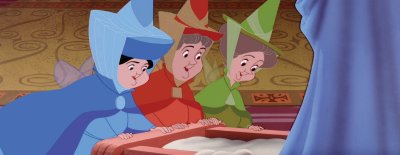
Then, paradoxically, the solution to get the highest quality of image was to get back to the oldest material! “Now, technology and our process has changed and what we do now is we actually go back to the original camera negative, which prior to anything – probably mid 50s – was all shot on nitrate, which is an explosive piece of film. So that actually has been stored off-site! But we move the camera negative back over. And the way they shot the films back then – and actually we continued to do when I was over at Feature Animation – is we tried it in a process successive exposure.
Basically, you shoot the same image three times in different registers – the blue, the red, the green. And then, through a photo optical process, you recombine them to make one image. And what’s really great about this is not only the image was sharp, but because it’s shot on black and white film stock, it doesn’t have any fading issues that we get in this current color negative. So we had a lot of success with a 70 year-old camera negative and being able to use it.
But the interesting thing about this is because it is successive exposure, you’re dealing with three times the amount of footage, three times the amount of dirt. It still has its own set of problems.”

This isn’t the first time Sleeping Beauty has been digitally restored: there had been a first attempt in the late 1990s, for a deluxe LaserDisc, and a 2003 Special Edition DVD release, but the bar wasn’t set high enough, obviously! As Duran-Singer says, “Basically, we had to do everything all over again because we were using a different film element. That’s really what made the difference.
And, the tools that clean-up companies use have obviously grown and matured, and working with one vendor pretty consistently – they’ve learned a ton on these titles. But the difference really was, instead of using, you know, a piece of film several generations away from the original, we went back to the original. So you’ve got all the data, all the sharpness, all the color saturation. You’re not fighting any built-in photochemical softness or fighting the same level of grain. You’re not fighting any of the fact that some of the colors are not as sharp or as saturated. So, starting with that original black and white has really made a world of difference.”
That said, restoration isn’t just a matter of technology. It still needs the human touch and the people to do it: “Our new process, as we take that original negative and we scan that at 4K, resolution which is a high resolution, it captures everything, and we then save that as a digital file which is totally cleaned up – dust cleaned-up, grain management – all of that is done. And there’s a group of us – we call it the Restoration Committee – and it’s represented by people who worked in animation in different aspects.
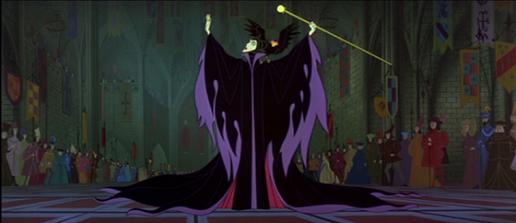
We have Andreas Deja, who many might be familiar with as one of our top Disney animators. We have Dave Bossert who is an animation director and a visual effects animator at Disney for 20 plus years, myself who worked as a post-production executive at Disney Feature Animation for 15 years. We have Theo Gluck who is our director of restoration and he’s a resident film format expert, and especially in widescreen formats. And then we have Joe Jiuliano who runs our film and digital camera services over at Feature Animation. That makes up the committee.
We work very closely with our restoration vendors looking at dailies, calling out things, dirt, fixes – and we do make choices about fixing images, certain problems that there might be in the film. A perfect example would be, if you’ve got an image of a hand and in one frame there’s a paint pop, like the finger pops off. When we look at that, the perspective is, if the animators had the ability to fix that mistake, then they would have. And that’s our criterion. We know that, obviously, a finger, a paint pop is not the original intention of the film makers, so we go back and we fix that.
But we still have times, debating things, saying, ‘Well, you know, that wasn’t the original intention. It’s not our goal to change the images; it’s basically to restore the level that the original filmmakers would have if they had the ability’.”

Good form, Mr. Smee?
In order to accomplish their task, Sara Duran-Singer and her crew faced many challenges, beginning with the very format of the movie, at the same time a blessing and a curse! First, she says, there was the issue of the Technirama format: “Technirama is basically a VistaVision frame with the optical squeeze on it. So instead of the four perfs per frame, you’re have eight perfs per frame. And again, three frames of negative per one frame of picture. So, basically, what that means is we had to scan and work on over seven miles of negative. There’s a huge amount of negative because of the way this was shot. And back then, this is very cutting edge.
Walt Disney, as we all know, was very much, into technology and into cutting edge in pushing the boundary. And, to embrace the Technirama format was very new.”
But that’s not all, since, while Walt Disney was making Sleeping Beauty, he also decided to format it in a widescreen CinemaScope shaped ratio: “That was a new format that was coming out of that time somewhat to address the big popularity of TV. The studios kind of noticed, obviously, that people were beginning to stay at home; they were, just like today, attached to that little box. And, you know, movie attendances were somewhat going down. So, that was kind of what all the studios and the cinemas we’re all trying to do. This widescreen made a totally different experience for the audience than they get from home, kind of like what we’re doing right now with the whole 3D world. We bring you 3D in the theaters. You can’t experience that at home at this point.
So, the plan was to release Sleeping Beauty as the Studio’s first CinemaScope widescreen film. Now, at that point, the format per scope was 2.55:1. Instead of the standard 2.35:1 which it is now. So they formatted this and animated it to support that 2.55 ratio which actually means that you’ve got more information on the left and the right sides of the screen.
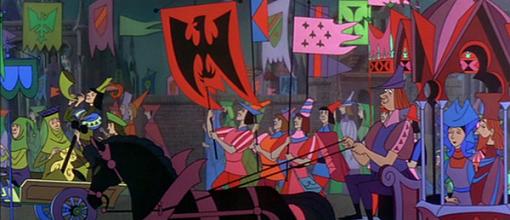
There are images there that we believe nobody has ever seen except probably during the dailies and maybe there was a unique screening at one point. But, certainly, if you ever saw the film in the movie theater when you were a child, or if you have the DVD or the VHS, you haven’t seen that information on the left and right. And because of the effect to the original negative, we scanned that full 2.55:1 and that is what you’re going to see on this release on Blu-ray and DVD, you’re seeing the full left, the full right; they animated it side to side in the full 2.55 and laid it out. There are pictures here you have never seen so this is really great for widescreen and everybody having in their plasma screen or their LCDs. This is a great title to release in that format.
Actually, the only other one that was a little bit different was Lady and the Tramp. They actually started making that one in 1.33. And then, when CinemaScope came out, Walt changed it over. At that point it was 2.35. So, this was the only title that had that extra information that nobody has ever seen before. Because it was made, you know, it took years to make the movie, so during that period of time, the format changed, but instead of going back and redoing everything, they just finished the movie as it was.”
At last, this “now-you-see-him, now-you-don’t” game can be put to a satisfying end, and some characters and other visual elements can finally appear on regular screens! “You know, when they have the welcoming party for Princess Aurora to introduce her to the entire kingdom and then that huge parade of horses and soldiers and peasants – that kind of goes left to right, right to left, so those characters came in later. Basically the characters move all the way from the left to the right and all the way from the right to the left. So, you know, the characters move in and across, but you still lost their entrance.”
In addition, the high-definition resolution provided further detail: “Well I think some of the stuff that just really jumps on Blu-ray”, enthuses Duran-Singer, “the forest – it just – the style, the style of painting. The forest, the details, and leaves, and the shading. You know, one of the things that kind of happened in previous transfers is you lost details in the dark areas.
One of my favorite shots is when the fairies bring Briar Rose back to the castle on her 16th birthday to have her reintroduced as Aurora. They walk across and they go down through a dark tunnel and out through an arch. The detail that you can see on the other side of the arch is just stunning detail. So that’s what I would look at. I would look in the dark areas.”
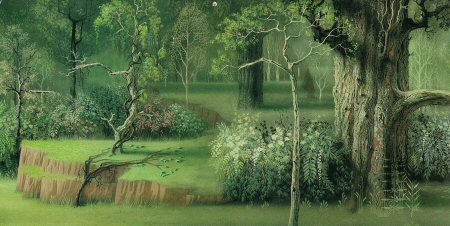
To clean or not to clean?
But so many details revealed by HD can also prove to be issues and have to be seriously discussed, as Duran-Singer continues: “It’s definitely the right title to kick off our Platinum Blu-rays, just because it is widescreen. You can get it in standard def as well, but in high definition, the negative holds up. There’s – it’s such a detailed film that your colors that Eyvind Earle has painted in his background – all that detail really comes across. In fact, we actually found too much detail.
You could actually see the paper grain and what they painted the backgrounds on. So we had to work with our vendor on lessening the paper grain, since the grain took away that sense of depth, because you’ve got paper grain. So we worked with our vendor in getting rid of that. But that’s how sharp it is.
On all these, we do tests because…obviously we get a film grain because we’re using a film element. And we look at taking away 100%, 50%, 25%. And what ends up happening is we end up taking all the film grains out because we don’t necessarily need it in animation. I know, and live-action use so much of the tool and it can help in the characters, but in this high resolution on animation it looks like noise. It doesn’t look like it’s film grain, it just looks like noise. So we test it on every title because every movie has a different look, they have different color palette, they have different designs, but in general we ended up taking that out because you look at it and go, ‘well, I know it’s film grain, but it’s just – looks like noise’.”
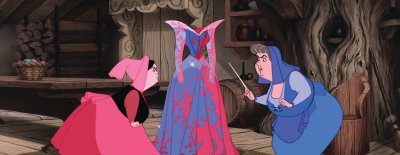
That’s when the artists enter: “The great thing is, within that team of people doing it, I mean Andreas, Dave, Theo – they’re great. Especially Andreas, that they’re real Disney animation historians. They know. Andreas trained under some of the Nine Old Men. So they really know, and first of all we try to go, ‘What caused that? What could have caused that?’ And then, clearly, once they kind of figure out what might be causing the problem we can make decision about what to fix. But we are very sensitive and we look at every single frame of film several times and debate it and discuss it and, you know, usually, all are on the same page.”
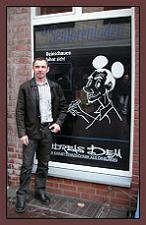 Sensitive to the point of turning to some of the most notable animation connoisseurs, like Andreas Deja, to help them, we asked him about that part of the process; how he uses his expertise as a Disney historian and artist to help inform the restoration most faithfully to the original creators’ intent: “Actually I did this with my colleague, Dave Bossert, who was involved with going to the Animation Research Library to look at original backgrounds and cels. It’s interesting, when you look at the original artwork, you find out that the colors look quite different than what you remember when looking at the screen.
Sensitive to the point of turning to some of the most notable animation connoisseurs, like Andreas Deja, to help them, we asked him about that part of the process; how he uses his expertise as a Disney historian and artist to help inform the restoration most faithfully to the original creators’ intent: “Actually I did this with my colleague, Dave Bossert, who was involved with going to the Animation Research Library to look at original backgrounds and cels. It’s interesting, when you look at the original artwork, you find out that the colors look quite different than what you remember when looking at the screen.
When you film something, you put the artwork under strong lights and the colors change on film, so we did a number of tests. If you look at the original artwork, you find Aurora’s hair has a strong green-tone, but when you put strong lights on the artwork reflecting back into the camera, her hair actually looks quite golden blonde. The Disney artists also conducted tests to get the proper color results on the final film and we needed to do the same tests to discover the final results of the actual color on screen. We then knew these were the colors we should be aiming for in the final restoration.
The ink lines remain the same because we won’t alter what was originally drawn or inked. There’s no alteration as far as the lines. But when you paint a cel, sometimes you see paint crawl – where you see streaks of paint, rather than a smooth, even surface – we did actually reduce some of these crawls to achieve the original artistic intent that was aimed for in the 1950s, for even color shades.”
The same kind of problems emerged from the Pinocchio and Snow White restorations, as Sara Duran-Singer suggests: “One of the ongoing issues specifically highlighted in Pinocchio and Snow White is paint crawl, because you have these more solid blocks of color, and the paints that you were inspecting, the way they mix – here at the studio they mix their own paints – and they needed to be constantly stirred, otherwise it separated. And if it wasn’t, it kind of dried and you would get this weird blotchiness. That again, it’s almost like grain. Even a grain is an easier decision to make but you kind of have to be careful with it. We do it as much as possible. If it’s a big image and you noticed it, we fix it.
But you don’t want to do too much because then it starts looking not like the film. I can only use the “wrong” term but it just starts looking wrong. You know, we test this when we look at it. So we make choices and sometimes we go too far and we’d say, ‘No, go back to the way it was.’ Sometimes, we’re going, ‘You know what, you need to clean that up because the tunic is crawling.’ It’s a choice. We try to make what works best for the film because they didn’t intend for there to be paint problem, but again, whether you take too much grain off, it starts looking plasticky. If we took out every single bit of paint crawl it starts looking really flat.”
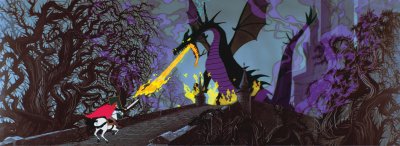
Fortunately, there was less cleaning of Sleeping Beauty than on other upcoming restorations, thanks to the good condition of the original negative. “Because it’s black and white, it’s shocking how good it is. I mean, we did this with Bambi and we’re doing even older titles and it really is amazing. We’re just finishing Pinocchio. And the colors of that and Snow White, I just so remembered as a child, I mean, the amount of beautiful colors. It’s pure animation… Andreas has a Blu-ray disc of Sleeping Beauty and he was – yesterday in the middle of Pinocchio – he was just babbling about how amazing the image was and he goes, ‘We shouldn’t charge $30, we should charge $20,000,’! And we’re kind of, ‘Well, that might kind of ruin the whole business plan, Andreas.’ But that just tells you how stunning that looks.
And then, there are certainly other issues, like Pinocchio actually – it was water damaged on the original negative from where it was originally stored. Something happened to it. It was stuck in water, but you can’t see that anymore. The restoration is amazing. Even across the scenes and they say, ‘Here’s an area of the water damage,’ I was like, ‘Wow, really?’
The data is all there in the negative, and the restoration tools and being able to use digital color timing and all that, it really is amazing. But I would say compared to some of the other films, Sleeping Beauty was not as dirty because it’s a newer title than like Bambi or Pinocchio or Snow White, obviously. And it didn’t have the damage. What made this one unique really was the size of the negative. Working with that much data – that’s a ton of data. And the design, the backgrounds and again often the detail, the line detail and the paper issue. That made it unique. Not that I want to say this was any more difficult than any other title, but just the scale of the footage made it a little bit more complicated.”
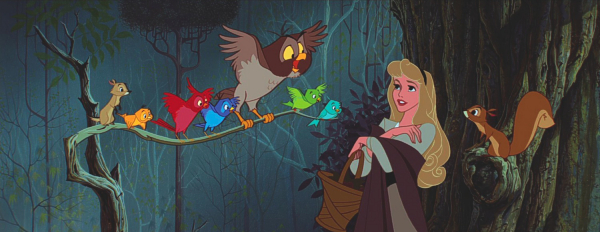
Sounds good!
Restoration is not only about image, of course, it’s also about sound. And this new release of Sleeping Beauty promises a brand-new 7.1 mix experience, especially created for the Blu-ray edition. Duran-Singer explains: “The other thing that’s really fresh about this title is, in Disney, we try to be very organized pack-rats. We don’t get rid of anything, which is why we’ve been so lucky with our library. You know, long before most studios, Walt Disney and his filmmakers realized the value of the library and also realized the value of keeping all their assets.
So when we started restoring this, we also do audio restorations which I think if you listen to any of the DVDs, we’ve gone back and we’ve cleaned up the tracks and done what we’ve called a Disney Enhanced Home Theater Mix, which is kind of trying to do a surround spread. Oviously with other titles we’re limited to the mono mix and could only do a ‘fake’ spread, but with this particular title, when we started researching the elements and picked out the sound elements to do the cleanup and the mix, we found these original score recordings that were recorded in Berlin in 1958, the original 3-track. And it was like, ‘Wooh, gold, we found it.’ So, what we did is take those 35mm 3-tracks of the music scoring. We digitized them into Pro-Tools. We then had a music editor and match cut those to what was in the movie. We cleaned it up, we reduced the noise, we equalized it, and then we gave it to our Academy Award-nominated mixer Terry Porter, who does all of our animated Platinum mixes, and he was able to do an amazing 5.1 and 7.1 Disney Enhanced Home Theater mix.
Obviously, the 7.1 is unique to the Blu-ray and I have this incredible theatrical demo that I do where I playback the original version of the movie – which is beautiful and nice – and then we open it up to the 7.1. And it’s a great – it’s an incredible experience. The music surrounds you, especially if you think about setting this up in your home theater, you’re going to be just completely surrounded by this beautiful score. And that is just a great bonus that you get. You’d still get the 5.1 on standard DVD, but the 7.1 truly is a unique experience and we were so lucky to have these original 3-track recordings. That really made the difference. We were able to do this.”

To infinity…and beyond!
So with the aid of technology, the Disney Vault is being cleaned-up for many generations to come, as Duran-Singer confirms: “We’ve actually been doing this since 2004 with Bambi, Cinderella, Little Mermaid, The Jungle Book, Peter Pan, Lady and the Tramp, One Hundred And One Dalmatians…so we’re actually getting near the end of the Platinum library animated titles and all these were done with this process, so they already exist in HD. When they go to go back and re-release Bambi on Blu-ray, we have it, you know, the element has been made.
Ideally what we’ve tried to do, because to do these titles is a three, four, five month process, we’ve tried to somewhat future proof it by mastering them at a higher level and archiving everything. And so, hopefully, we won’t have to go back and redo this again for like another 10, 15, 20 years. It’s really going to depend on whatever comes next and if our masters are appropriate for that.”
In the meantime, these masters are ready for new theatrical experiences: “Sleeping Beauty has been playing up at the El Capitan in digital cinema because when we do this, it’s under our restoration and preservation label. Part of what we do with these titles is to preserve them, and we do create a new digital cinema master on all the titles. We create a new 35mm negative, and then a couple of times we have had limited international releases like, I think, Bambi and The Jungle Book have been limited released internationally. And we also create a new successive exposure negative from these original 4K scans.
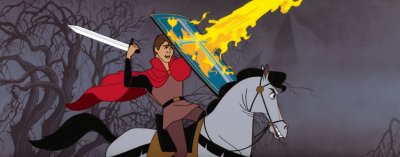
So the original negative is great, but it is deteriorating and eventually it’s not going to be usable, so we just scan the data at 4K, and film out a new successive exposure negative and put that on a shelf. And that would be the preservation element that, you know, the Sara Duran in 60 years pulls off of the top of the shelves and does with whatever the technology allows you to do at that point.”
That said, Sara Duran-Singer has many classics on her plate right now, such as re-doing Snow White according to these new criteria: “We go back, again because none of these have ever gone back to the original negative. Now, the Snow White restoration was beautiful and that was actually the first digital restoration they did. But again, they used a film element that was several generations away from the original so we are going back to the original negative from the 30s and it’s held up really well.
It is obviously the dirtiest of all of them and there are issues that, while the colors are amazing and it’s very sharp, there are focus issues that are built in to the negative. You know, the focus didn’t quite attract when they shot the scene or something. Maybe there’s nothing we can do, but the overall negative has held up really well. And again – I’m looking at a shot I like, with the dwarfs – there’s a lot of pastels and lavenders and light blues, and I always thought the dwarfs are going like gray and brown, and that’s not necessarily their color palette.”

So, what’s next, you ask!? After Pinocchio, “We are going to do the same thing to Fantasia that we’ve done to all these other Platinum titles. That means we’d go back to the original negative and scan it. Now, the interesting thing about this title would be, ‘what is the original version’, because there has been multiple versions of Fantasia . Well, we are actually beginning to research that because that would be next step in our queue. So right now we’re researching elements and trying to say, ‘What is the original Fantasia ?’ I guess, once our cleanup vendors get a hand on the picture it becomes easier, but we know how many different looks that film has, so, each piece is going to be like a whole new little test for them. So that will be a fun, difficult one. It will end up looking like these other ones.”
And for the audio? “I mentioned Terry Porter, our mixer, and he has gone back and I think remixed Fantasia for some of the different releases. And when I told him it’s coming up again, he was kind of like, ‘Oh, here we go again.’ That one, obviously, we need to confirm that we have the original sound and see if we can do something with that.”
The list also includes more contemporary classics: “When we went back and redid Beauty and the Beast for Imax, we cleaned up and did fix a lot of details and things. So, yes, the files – if we have to go back and remaster the files – we will be using the Imax files.”
An adventure in itself, restoration sounds like a true passion for Sara Duran-Singer: “Well, you know, we all feel – and this is going to sound really Disney – but we do feel really, really lucky to work on these. It’s fun because we all remember these movies as a child and to go back and revisit them…we’re just really lucky. And we are very proud of this movie, Sleeping Beauty. It really is a showcase, especially for Blu-ray.”
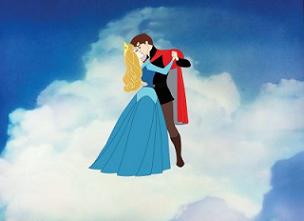
With our gratitude to Sara Duran-Singer, Mindy Johnson, Mac McLean and Cynthia Raza.





